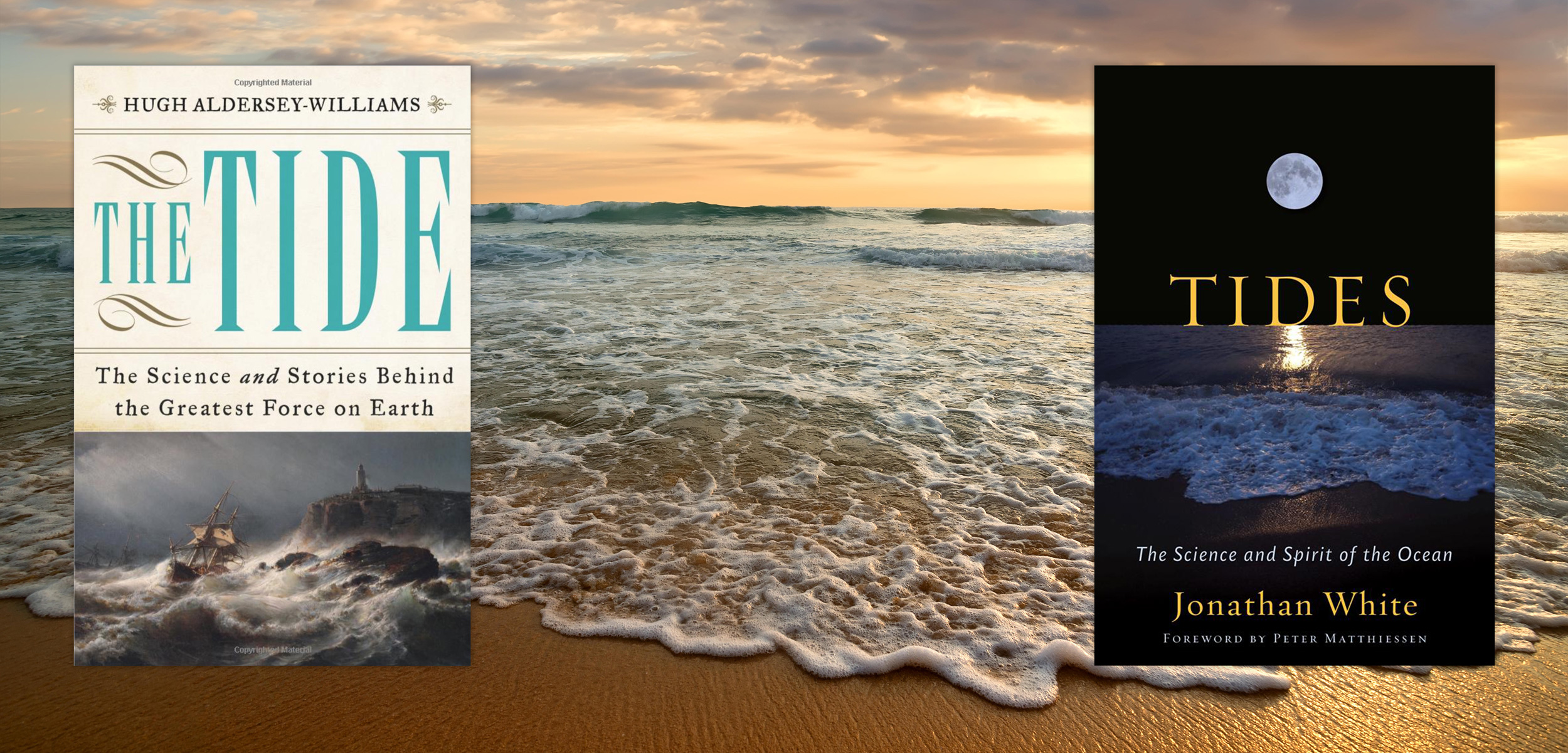Book Review: The Tide and Tides
Two sweeping studies mingle science and cultural history to illuminate the enduring power of the sea.
Article body copy
British author Hugh Aldersey-Williams specializes in the history of science. He turns to the ocean for his latest book, The Tide: The Science and Stories Behind the Greatest Force on Earth. This is no textbook, he explains, but “a book of stories and journeys.”
Aldersey-Williams begins by watching an entire tide cycle one September day near his home on England’s coast. For 13 hours, he charts the tide’s movements in hourly readings and photographs. He notices much more than the water though, recording mud, smells, and creatures, too. Chapter 10, the book’s highlight, goes into more detail about the fauna of particular intertidal habitats—including shorebirds in Norfolk, England, and the grunion (a fish) in California—revealing how human encroachment threatens them.
Farther afield, the author visits Chalcis, Greece, where Aristotle drowned after misinterpreting the tides. Our faith in modern technology has translated into hubris, such that we “have lost our proper fear of the tide,” Aldersey-Williams observes. Although it remains dangerous—a group of cockle pickers were swept away at Morecambe Bay in northwest England in 2004, for instance—technology has truly made navigating tides safer, the book reveals. Building on Isaac Newton’s theory of how the Sun and Moon influence tides, William Thompson invented a proto computer for analyzing tide patterns in 1872; a virtually identical machine was used in 1944 to plan the D-Day landings.
The Tide is incredibly wide-ranging; its points of reference stretch from the biblical Exodus story to Thames tides in Charles Dickens’s novels. The momentum only sags a bit in a chapter on economics. Through it all, though, Aldersey-Williams is a keen, learned tour guide. By deeply probing the facts and metaphors of the tide, he succeeds in inspiring wonder.
Jonathan White’s Tides: The Science and Spirit of the Ocean covers much of the same historical and scientific material as The Tide. And like Aldersey-Williams, the author (a conservationist and mariner) takes readers along as he explores England, Venice, and the Bay of Fundy in northeastern North America. The books contain a comparable mixture of explanation and mysticism, but White’s more conversational style makes for livelier travel writing as he joins an Inuit guide in an ice cave beneath Ungava Bay in Canada’s Arctic, attends China’s Bore-Watching Festival on the Qiantang River, and interviews monks about the tides at northern France’s Mont Saint-Michel.
Color photographs, along with black-and-white line drawings, diagrams, and maps, make White’s a somewhat friendlier introduction to the science of the tides. While Aldersey-Williams devotes only a handful of pages to tidal power, Chapter 8 of Tides is a thorough discussion of the possibilities of using it for renewable energy. The book states that only two percent of renewable energy comes from tide mills, but Britain, Chile, Canada, and Japan are poised to increase that figure. White notes that tidal power, unlike solar or wind energy, is predictable—one can calculate exactly how much will be produced and when. However, harnessing it requires major infrastructure, for which political will is often lacking.
Though White paints a bleak picture of disasters that will result from rising sea levels—“even if we stopped all greenhouse emissions today, the momentum of global warming and sea level rise is locked in for at least the next several centuries”—he also celebrates the enduring magic of the tide. “The tide teaches us to live with mystery and complexity,” he enthuses.
While similarly impressive and exhaustive, The Tide and Tides have slightly different approaches. Aldersey-Williams is meditative and scholarly where White is practical and passionate. But both books powerfully convey the complexity of the tides, which, despite our technology, we still don’t fully understand. As White poetically concludes, “The tide is vibration, music, time.”
The Tide: The Science and Stories Behind the Greatest Force on Earth
By Hugh Aldersey-Williams
368 pp. W. W. Norton & Company
Tides: The Science and Spirit of the Ocean
By Jonathan White
360 pp. Trinity University Press

